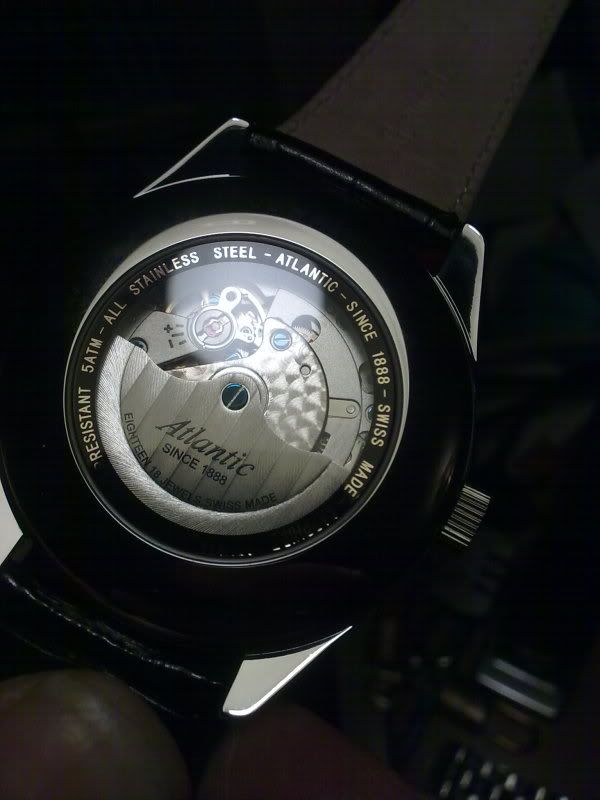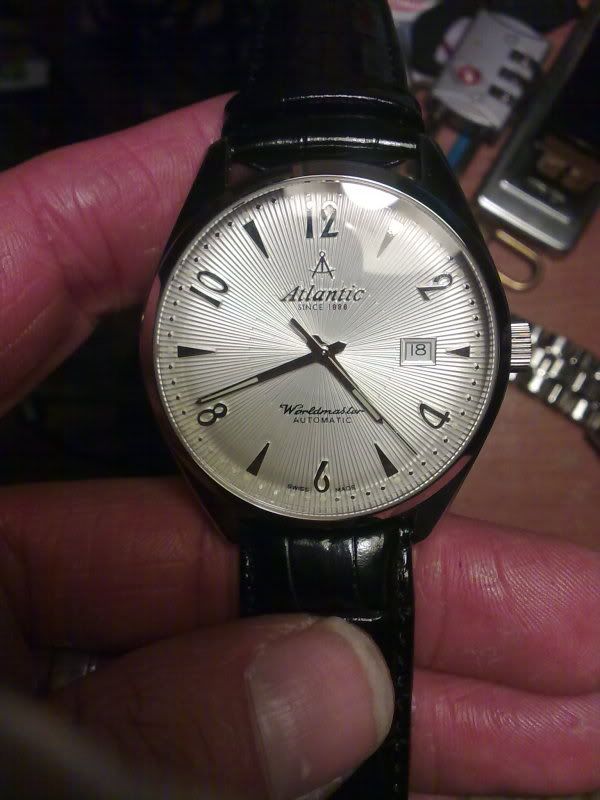Nog een paar leuke varianten op dit thema:
[quote]
Legal definition
According to Fédération de l’industrie Horlogère Suisse (FHS), of which all Swiss watch manufacturers are members, a movement is considered to be “Swiss” if:
- it has been assembled in Switzerland;
- it has been inspected by the manufacturer in Switzerland; and
- the components of Swiss manufacture account for at least 50 percent of the total value, without taking into account the cost of assembly.
A watch can legally be labeled “Swiss” or “Swiss Made” if:
- its movement is Swiss;
- its movement is cased up in Switzerland; and
- the manufacturer carries out the final inspection in Switzerland.
Watches assembled outside of Switzerland but containing “Swiss” movements may use the label “Swiss Movement”.
These definitions are accepted by consumer protection agencies in some, but not all, other nations.
It is important to note that the above requirement specifies that least 50% of total value, not quantity, of movement components must be of Swiss manufacture. Given the low cost of Chinese labor, as compared to Swiss labor, a fair amount of Asian components are turning up in “Swiss” movements these days.
An interesting example of a “Swiss” movement with a substantial non-Swiss content is the Claro-Semag calibre CL 888. This movement is in fact the Chinese Sea-Gull calibre ST16, refinished by Claro-Semag of Switzerland with sufficient Swiss content (by value) that it may be legally installed in watches signed “Swiss Movement”.
Going one step farther, Montres Edouard Lauzieres of Switzerland re-refinish the SEMAG CL 888 and redesignate it as calibre EL-18, claiming (legally) their in-house calibre uses a genuine Swiss movement blank. Edouard Lauzieres watches fitted with the CL 888 are marked “Swiss Made” in accordance with Swiss law, despite the Chinese origins of their movements.
Related Definitions
Fans of US focused international watch brands such as Invicta and Stuhrling Original have occasionally expressed confusion over some of the country-of-origin terminology used, particularly with reference to the word ‘Swiss’. Below is a rough guide to some of the terms used:
Swiss Made - the entire watch was assembled in Switzerland such that at least 50% of the total component value is Swiss, and the movement is a certified Swiss Movement.
Swiss - when positioned below 6 o’clock on the dial, on most markets this is legally equivalent to ‘Swiss Made’ (see above). The owners of the Invicta brand have recently admitted that their own use of ‘Swiss’ is not equivalent to ‘Swiss Made’ (see link below) as they are not a member of the FHS.
Swiss Movement - at least 50% of the component value of the movement is Swiss and the movement was assembled and inspected in Switzerland, however the rest of the watch and final assembly are not Swiss. Assume final assembly in China.
Swiss Movt - it might be either a Swiss Movement, i.e. finished in Switzerland, or a Swiss Parts Movement (aka Swiss Ebauche Movement), i.e. finished and assembled outside of Switzerland but using Swiss parts. For the US market the movement itself may be labeled ‘China’. (Swiss Movt was a common discription used in Hong Kong watches in years past)
Swiss Parts Movement - some Swiss parts were used in a Chinese assembled movement. The movement will almost certainly be labeled ‘China’.
Swiss Comp (i.e. Swiss Components) - some Swiss components have been included in some part of the watch, not necessarily the movement. (Swiss Comp is a new designation invented by Invicta. It has not been used by other brands)
Any other usage of the word ‘Swiss’ has no particular meaning with regards country of origin e.g. brand or company names like Technica Swiss Ebauches or Swissebauches Ltd. [/quote]
Leuk stukje historie, let wel, geschreven door een Amerikaan 
[quote]
"In 1871 the Swiss were compelled by US law to put “Swiss Made” on their watch movements. They tried to hide it in a lot of damaskeening or in an obscure spot but it had to be there.
"This is because American mass produced watches were kicking some serious Swiss butt in terms of quality and performance. The Swiss resorted to faking American designs and names to stay alive in the US market. Finally they gave up and for years were a non-factor.
"It was only after the Swiss adopted and refined US factory methods - and moved away from cottage industries - that they were able to compete effectively. That’s when “Swiss Made” became something to talk about.
“Whenever a country stuck to local artisans making a few non standardized watches, its horological industry has gone into irreversible decline. 19th century Britain is the best example.”
Ray further notes that, “Swiss fakes [of American watches] are covered in detail in Shugart’s ‘Complete Price Guide to Watches.’ I have the 2003 edition and there it’s found on pp 93-94. The 19th century Swiss difficulty in competing with the Americans is found in Chapters 19-20 of Lande’s ‘Revolution in Time’ (2000). The decline of British watchmaking is described in Chapter 17 of the same book.”
The Swiss watch industry did not rise to global market dominance until the post-war twentieth century. According to Wikipedia, "During World War II, Swiss neutrality permitted the watch industry to continue making consumer time keeping apparatus while the major nations of the world shifted timing apparatus production to timing devices for military ordnance.
“As a result, the Swiss watch Industry enjoyed a well protected monopoly. The industry prospered in the absence of any real competition. Thus, prior to the 1970s {and the Quartz watch revolution}, the Swiss watch industry had 90% of the world watch market.” [/quote]
Groeten,
Martin
 , mar dit lijkt me een goede verklaring.
, mar dit lijkt me een goede verklaring.




